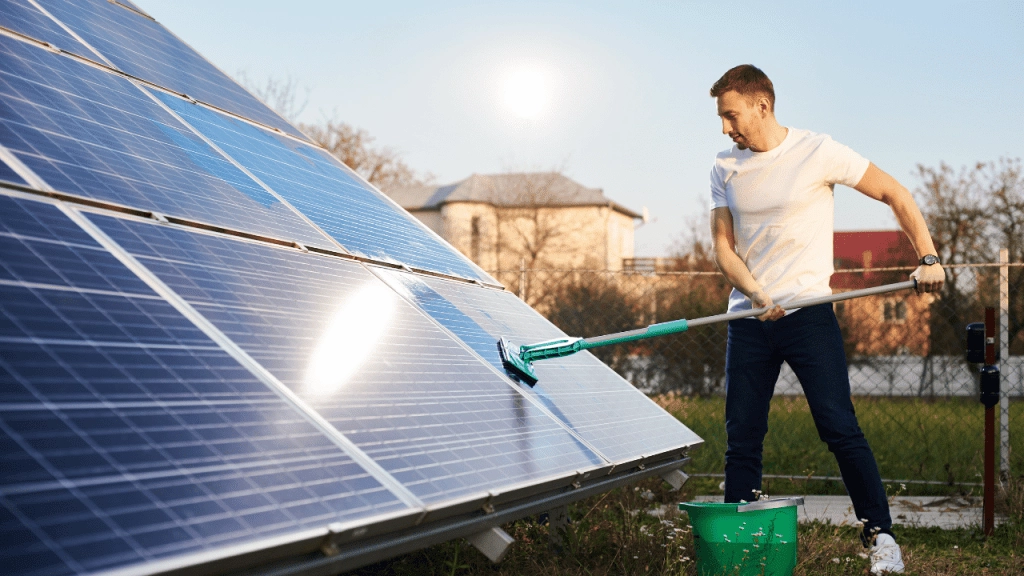The environment is filled with various shapes of dust particles, and solar panel arrays are used outdoors, making the surface of photovoltaic modules prone to dust accumulation.

Dust on the surface of photovoltaic solar modules can have several negative effects. On one hand, it can block sunlight, reducing the transmittance of the module’s glass surface and consequently decreasing the amount of solar radiation reaching the cell surface. On the other hand, it can alter the heat transfer characteristics of the solar panels’ surface; the dust absorbs solar radiation and converts it into its own heat, while also obstructing the heat dissipation of the PV solar module’s cover glass. In summary, dust is one of the main points affecting the performance ratio of PV power plants, specifically as follows:
Solar Radiation
Dust accumulation on glass surfaces can significantly reduce the transmittance of solar radiation and cause substantial diffuse reflection of sunlight onto photovoltaic solar modules. Experiments have shown that dust buildup on glass can lead to a loss of solar radiation by 5% ke 30%, primarily due to the absorption, reflection, and scattering effects of dust particles on the glass surface.
Transparency
Dust on solar panels often contains significant amounts of calcium and magnesium oxides. When exposed to rain, these ions can dissolve into the water and re-adhere to the glass surface of the modules. Over time, this can lead to the formation of a thick, hard layer of calcium and magnesium scale, which is difficult to remove and can severely influence the performance of the solar panels, potentially causing hot spots in some solar cells.

Photovoltaic Module Temperature
Dust adhering to the tempered glass surface of solar panels can absorb a portion of the solar radiation, converting it into heat and thereby increasing the operating temperature of the solar modules. Selain itu, the dust acts as an insulation layer, impeding heat dissipation and exacerbating the thermal effects on the modules, which in turn impacts the efficiency of solar electricity generation.
The solar panels are the core components of a photovoltaic power system, the efficiency of solar modules in converting light into electricity is inversely proportional to temperature. The efficiency decreases as the temperature rises, which is exacerbated by dust on the module surface that absorbs heat and transfers it to the cells, further reducing the overall photovoltaic power generation efficiency.
Kesimpulan:
In a photovoltaic power system, dust accumulation on the solar module surface not only obstructs the solar radiation reaching the photovoltaic cells but also contributes to increased temperature rise of the solar modules. Failure to promptly clean the dust from the glass surface significantly impairs the power generation performance of the solar modules. Lebih-lebih lagi, with a constant dust thickness, the greater the angle of sunlight incidence, the longer the path of sunlight through the dust layer, leading to increased occurrences of reflection, scattering, and absorption. Karena itu, during photovoltaic operations and maintenance, it is crucial to address the impact of dust on the surface of photovoltaic modules by regularly cleaning them to ensure the efficient operation of the solar power station.



